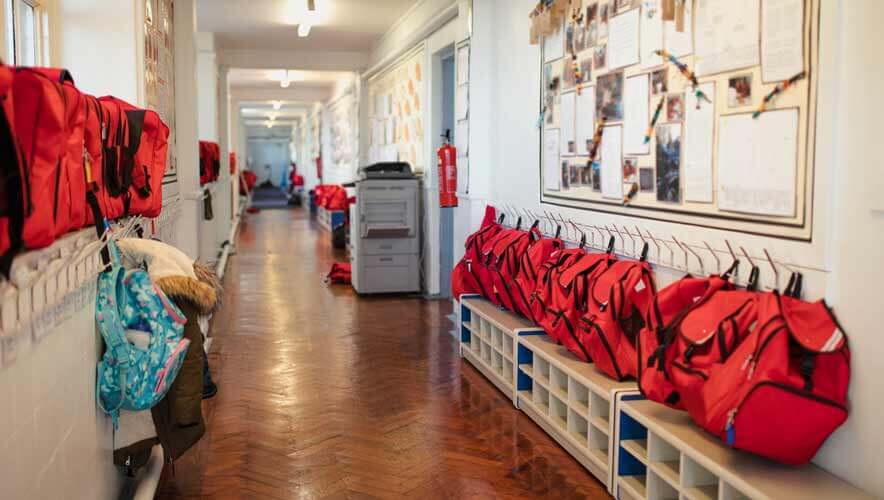From Reactive to Effective: 5 Ways to Refocus School Security Investment Decisions
When it comes to safety and security, K-12 schools look for solutions designed to meet their daily needs and challenges. Security teams want a clear picture of on-site events and the ability to respond quickly to threats if needed. School administrators want a system that is easy to use, doesn’t interrupt the educational environment, and can grow with their campus’s needs. Not all security systems respond equally to the evolving challenges of schools, and it can be difficult to navigate options and determine which one to implement.
School security professionals can take a breath and use these five tips for selecting a security system that is best positioned to meet their school security needs both now and in the future.
Align on Top Security Objectives
To find the right security solution, stay focused on your top priorities. Meet with your administrative teams to determine your school’s goals and requirements in order of importance. Establish a dedicated threat assessment team with members of the school staff from different disciplines, such as administration, security, mental health, athletics, and facilities. Start with solutions that will have the highest impact on school and student safety. Don’t get distracted by lower priority items.
With clear priorities in place, you’re better able to choose your next security system wisely and get buy-in from other team members.
Top considerations for physical security measures are often video management and access control. These are essential building blocks for a school security system. Make sure to review these solutions to ensure they are up to date. Do you have clear video for both real-time review and forensic evidence for the future? Can your access control properly meet your security needs both now and in the future?
Other important capabilities may include automatic license plate recognition (ALPR) to identify suspicious vehicles. Federation with local authorities can enhance situational awareness for emergency personnel. Other capabilities, such as vape sensors or video analytics, may be desired but aren’t always a top priority.
Focus on Hybrid Solutions
While some vendors offer 100-percent cloud solutions, consider a hybrid solution that combines the best of both cloud and on-premises systems.
With a hybrid system, you can keep some capabilities on-premises to support critical event scenarios when milliseconds matter. By keeping certain functions on-premises, you limit the possibility of Internet outages affecting security systems and can count on system uptime with built-in failover support.
There are some advantages to cloud solutions, including automated updates and cloud storage. A hybrid system allows you to leverage cloud capabilities where it makes sense. For example, you can use on-premises solutions for certain access control functions and short-term video storage. After 24 to 48 hours of video capture, your system can archive video in the cloud for possible future investigations.
Also, be aware of cloud-based solutions that use proprietary cameras or other hardware as part of their configuration. Proprietary hardware only works with a cloud vendor’s software. If you cancel your subscription, you might need to replace cameras and hardware too, which can be expensive.
Opt for Open Architecture and Unified Platforms
Open architecture and unified platforms position your school for long-term scalability and flexibility. They also maximize the amount of uninterrupted service time and minimize replacement and maintenance costs.
With an open architecture system, it’s easier to add cameras, access control hardware, and sensors. During implementation, you may be able to keep some of your existing hardware and scale your solution over time. This provides for a better return on your investment.
Along with an open architecture system, look for a unified platform. Not all platforms are truly unified. Make sure the system has a single code base that is used across all infrastructure to manage, cameras, doors, and other devices. The front-end user interface and the back-end logic should be on the same code base, too, so you have one point of contact for support instead of two.
Modern unified systems allow you to view multi-site video and analytics from a single control panel. You can also share information with local authorities through federation and monitor your school environment from a central location. This includes managing access rights and responding to incidents with automatic standard operating procedures (SOPs). Some systems also have a Web or mobile application to ensure that staff members always have access to the information needed.
Evaluate Options Thoroughly
Due to the growth of attention given to the K-12 school security market, there has been an increase in vendors creating new products. However, some of these solutions may not meet compliance standards or work as well as described.
Choose a vendor with a track record in providing K-12 solutions. Consider not only their products but also their business model and future plans. How long have they been in business? What is their financial stability? Are they investing in research and development?
Focus on vendors with a successful model for working with schools and a commitment to supporting evolving security needs. This helps form a picture of their long-term outlook, which can impact the lifecycle of your investment.
If you negotiate a multi-year upfront fee, be sure that regular maintenance and upgrades are included throughout the life of the contract. You want to receive ongoing updates for essential new features and cybersecurity patches.
Ask Others for Advice
There are many resources to help you evaluate security systems. Some vendors have education bundles with software, hardware, and services targeted to K-12 schools. Many offer resources, such as security checklists, customer references, and white papers. If you’d prefer a third-party resource, work with a consultant who can help identify the best vendors for you.
Check directly with other schools to learn from their experiences. You can often get references from vendors or talk with school contacts in other districts. For federation capabilities, check with local authorities to evaluate their experiences with various school security systems. Finally, consider a pilot program to ensure that your system achieves your top objectives.
Taking these steps will help you evaluate various systems effectively and thoroughly. The main goal is to have a proactive approach to security, giving students, faculty, and parents the confidence they need to go about their school day.
The right tools for the job help security operators feel empowered to foster a safe learning environment where students and teachers thrive.
Bruce Canal, CPP, joined Genetec in 2023, and he is responsible for developing and driving business strategy for the education vertical. He brings more than 25 years of education-related security experience. Canal is the former director of physical security for the eighth largest school district in the United States and previously served as an officer for the Indiana State Police.











